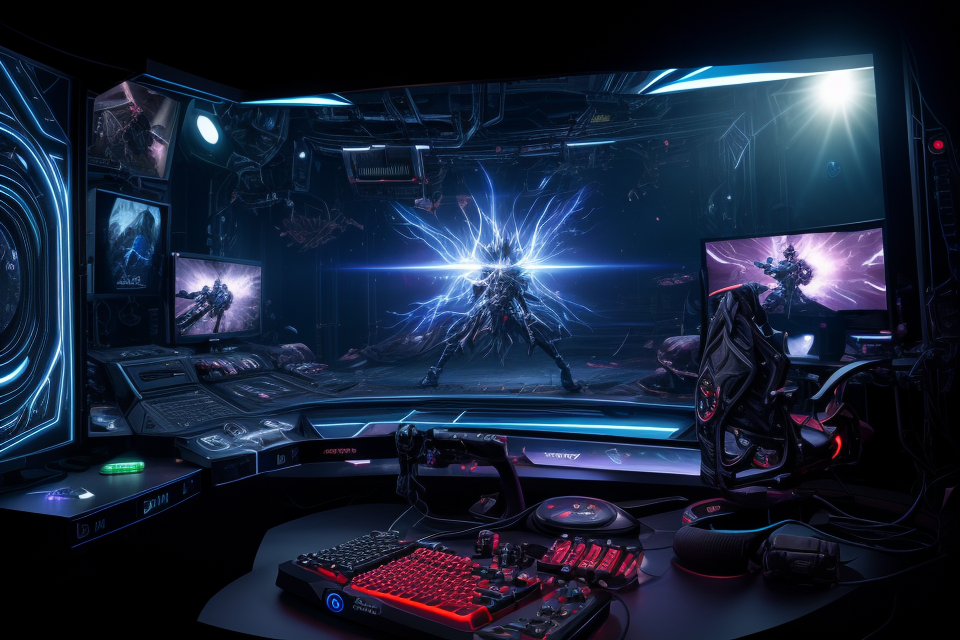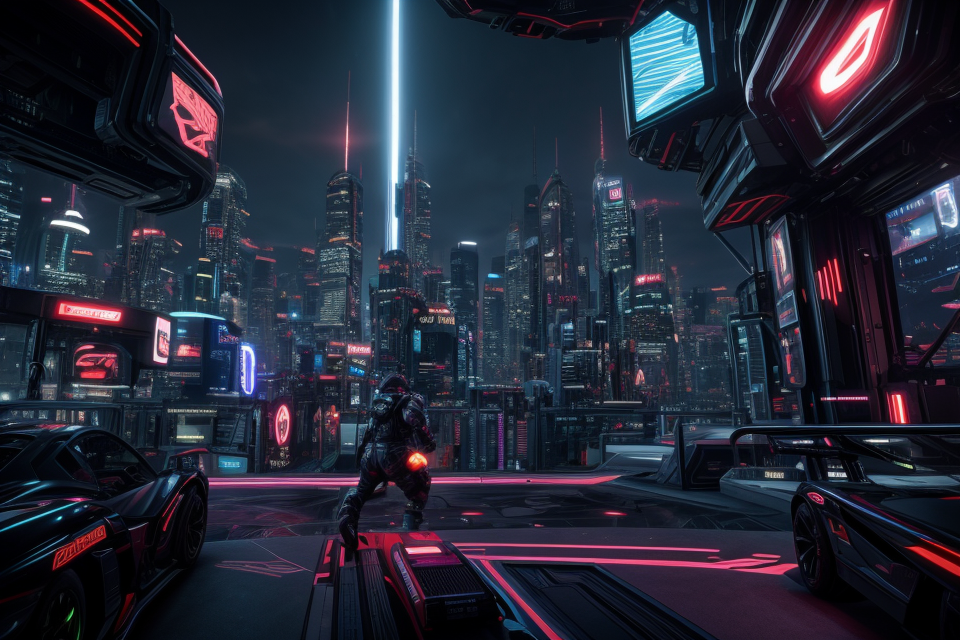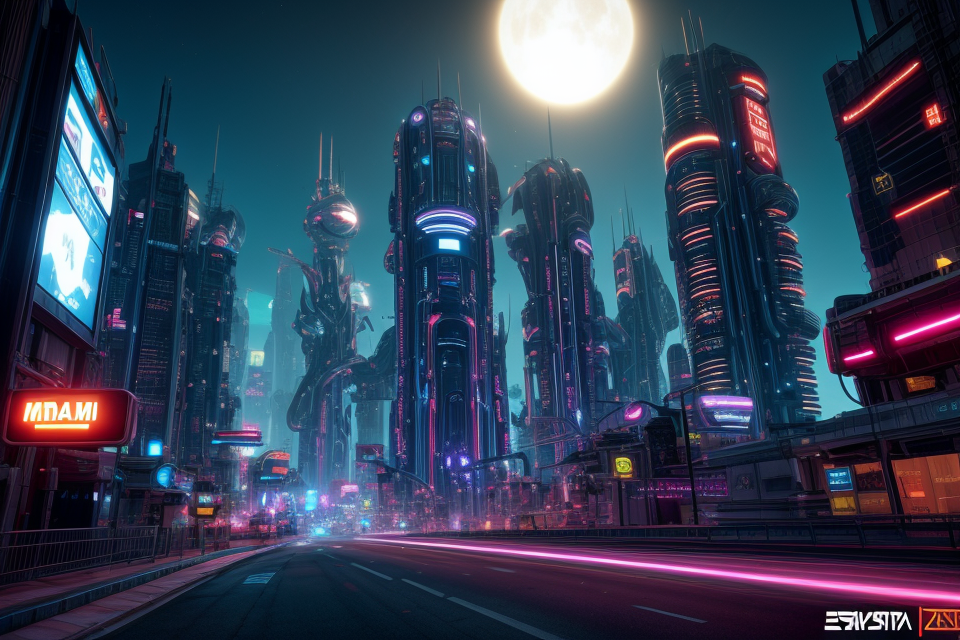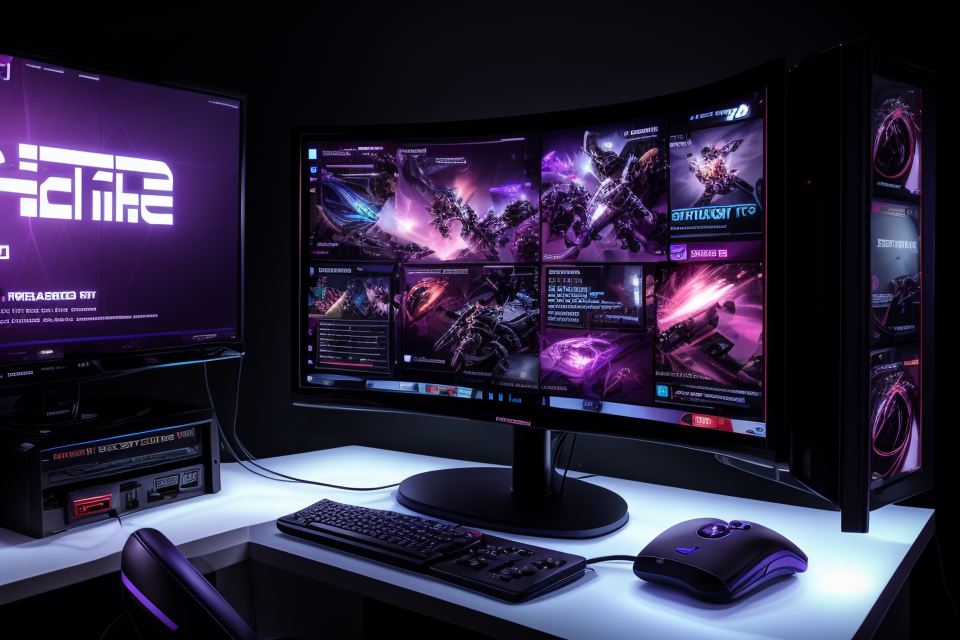
Gaming visuals refer to the aesthetic and graphical elements present in video games. It includes various aspects such as character models, textures, lighting, animations, and special effects. These visuals play a crucial role in creating an immersive gaming experience and help players get engrossed in the virtual world. With the advancement in technology, gaming visuals have evolved dramatically over the years, providing players with a more realistic and visually stunning experience. In this guide, we will delve into the world of gaming visuals and explore the various techniques and technologies used to create some of the most captivating and awe-inspiring game environments. So, buckle up and get ready to unveil the magic behind gaming visuals!
What Are Gaming Visuals?
Definition and Importance
Gaming visuals refer to the graphical and visual elements present in video games. This includes the design of characters, environments, objects, and animations. These visuals play a crucial role in enhancing the overall gaming experience.
- The visual aspect of video games:
- Includes graphics, character design, environment design, and animations.
- Enhances the overall gaming experience.
- How it impacts the gaming experience:
- Provides realism and immersion to the game.
- Increases engagement and enjoyment for the player.
- Affects the game’s aesthetic and artistic value.
Different Types of Gaming Visuals
Gaming visuals refer to the graphical representations used in video games to create immersive and engaging experiences for players. The different types of gaming visuals include:
2D Graphics
2D graphics are two-dimensional visuals that are commonly used in games that do not require complex 3D graphics. These graphics are often simpler and more cost-effective to produce, and they are commonly used in retro-style games or mobile games.
3D Graphics
3D graphics are three-dimensional visuals that create a more realistic and immersive gaming experience. These graphics are often more complex and require more processing power, making them ideal for more advanced games and gaming consoles.
Art Styles
Art styles refer to the visual aesthetics used in games, including character design, backgrounds, and environments. Different games may use different art styles to create unique and memorable experiences for players.
Animation
Animation refers to the movement of visual elements within a game, including characters, objects, and environments. Different types of animation, such as keyframe animation and motion capture, are used to create realistic and engaging movements within games.
Understanding the Technical Aspects
Graphics Engine
A graphics engine is a software component that is responsible for rendering images and animations in video games. It is a complex system that works in conjunction with other components such as the game engine, physics engine, and audio engine to create a seamless and immersive gaming experience.
How graphics engines work
Graphics engines use a combination of hardware and software to generate and display images in real-time. They use algorithms to transform and manipulate 3D models, textures, and other graphical elements to create the final image that is displayed on the screen.
One of the key functions of a graphics engine is to optimize the rendering process to ensure that the final image is displayed smoothly and efficiently. This involves managing various technical aspects such as memory usage, frame rate, and frame buffer.
Popular graphics engines used in gaming
There are several popular graphics engines used in gaming, each with its own strengths and weaknesses. Some of the most popular graphics engines include:
- Unity: Unity is a popular game engine that is used to create 2D and 3D games for a variety of platforms. It features a powerful graphics engine that supports a wide range of graphical effects and features.
- Unreal Engine: Unreal Engine is a game engine developed by Epic Games. It is known for its high-quality graphics and advanced features such as physics simulation and animation.
- CryEngine: CryEngine is a game engine developed by Crytek. It is known for its advanced graphics capabilities and support for realistic lighting and shadows.
- RenderWare: RenderWare is a game engine developed by RenderWare Ltd. It is known for its high-quality graphics and advanced rendering features such as real-time reflections and volumetric lighting.
Overall, the graphics engine is a critical component of any video game, and understanding how it works can help developers create more immersive and visually stunning games.
Rendering Pipeline
The Process of Rendering Game Visuals
The rendering pipeline is the process of generating and displaying images in a video game. It is a complex system that involves multiple stages of image processing, from creating the initial image to the final output on the screen.
The Role of Different Components in the Rendering Pipeline
The rendering pipeline is composed of several components that work together to produce the final image. These components include:
- Vertex Shaders: Vertex shaders are responsible for transforming the 3D models into 2D images that can be displayed on the screen. They manipulate the vertices of the models, scaling, rotating, and translating them to create the desired perspective.
- Pixel Shaders: Pixel shaders are responsible for adding texture and color to the 2D images generated by the vertex shaders. They manipulate the pixels, adding shadows, reflections, and other visual effects to create a more realistic image.
- Rasterization: Rasterization is the process of converting the 2D images generated by the pixel shaders into pixels on the screen. It involves determining which pixels should be displayed and how they should be colored.
- Depth Buffering: Depth buffering is a technique used to prevent objects in the foreground from being obscured by objects in the background. It involves rendering the objects in the background first and then rendering the objects in the foreground on top of them.
- Scissor Test: The scissor test is a technique used to determine the visible area of the screen. It involves checking which parts of the screen are visible and which parts are obscured by other objects.
- Z-Buffering: Z-buffering is a technique used to determine which objects are in the foreground and which are in the background. It involves comparing the depth values of objects and selecting the object that is closest to the camera.
- Stencil Buffering: Stencil buffering is a technique used to add transparency to objects in the foreground. It involves creating a mask that determines which parts of the screen are transparent and which parts are opaque.
- Anti-Aliasing: Anti-aliasing is a technique used to smooth out the edges of objects in the image. It involves adding additional pixels to the edges of objects to create a smoother image.
- Texture Mapping: Texture mapping is a technique used to add detail and realism to objects in the image. It involves mapping a 2D texture onto a 3D object to create the appearance of surface detail.
- Lighting: Lighting is a technique used to simulate the effects of light on objects in the image. It involves determining how light interacts with objects and how it affects the appearance of the image.
These components work together to create the final image that is displayed on the screen. By understanding the rendering pipeline, game developers can create more realistic and visually appealing games.
Optimization Techniques
Importance of optimization
In the world of gaming, optimization is crucial to ensure smooth gameplay and seamless visuals. Optimization involves making adjustments to the game’s technical aspects, such as graphics, frame rate, and loading times, to enhance the overall gaming experience. This is particularly important for games with complex visuals and high-performance requirements, as optimization can help prevent lag, crashes, and other technical issues that can negatively impact the gaming experience.
Common optimization techniques used in gaming
There are several optimization techniques that game developers use to enhance the performance of their games. Some of the most common techniques include:
- Texture compression: This technique involves reducing the size of textures used in the game to reduce their file size and improve loading times.
- Level of detail: This technique involves adjusting the level of detail of objects and environments based on the player’s proximity to them. This helps to improve performance by only rendering objects and environments that are relevant to the player’s current location.
- Dynamic lighting: This technique involves adjusting the lighting in real-time based on the player’s location and movement. This helps to improve performance by reducing the number of lighting calculations that need to be performed.
- Particle systems: This technique involves using special effects, such as explosions and fire, to enhance the visuals of the game. However, these effects can be resource-intensive, so game developers must optimize them to prevent lag and other technical issues.
- Streaming technology: This technique involves loading only the parts of the game that are necessary at any given time, rather than loading the entire game all at once. This helps to improve performance by reducing the amount of data that needs to be loaded at any given time.
These are just a few examples of the optimization techniques used in gaming. By utilizing these techniques, game developers can enhance the performance of their games and provide a smoother, more seamless gaming experience for players.
Visual Effects and Post-Processing
Visual effects are an integral part of gaming, and they enhance the overall gaming experience. In this section, we will discuss the overview of visual effects and the post-processing techniques used in gaming.
Overview of Visual Effects
Visual effects refer to the visual elements that are added to the game to enhance its overall look and feel. These effects can range from simple particle effects, lighting, and shadows to complex physics simulations and character animations. Visual effects are used to create a more immersive gaming experience and to make the game more engaging.
Some of the common visual effects used in gaming include:
- Particle effects: Particle effects are used to create small visual elements such as smoke, fire, and sparks. These effects are often used to enhance the visual appeal of the game and to create a more realistic environment.
- Lighting and shadows: Lighting and shadows are used to create a more realistic environment in the game. They are used to simulate the way light interacts with objects in the game world, and they can be used to create a more immersive experience.
- Physics simulations: Physics simulations are used to create realistic physical interactions between objects in the game world. They are used to simulate the way objects move and interact with each other, and they can be used to create a more realistic gaming experience.
- Character animations: Character animations are used to create more realistic movements for characters in the game. They are used to simulate the way characters move and interact with the game world, and they can be used to create a more immersive experience.
Post-Processing Techniques Used in Gaming
Post-processing techniques are used to enhance the overall visual quality of the game. These techniques are applied after the game has been rendered, and they can include things like color correction, bloom effects, and depth of field.
Some of the common post-processing techniques used in gaming include:
- Color correction: Color correction is used to adjust the colors in the game to create a more realistic and visually appealing environment. This can include adjusting the brightness, contrast, and saturation of the colors in the game.
- Bloom effects: Bloom effects are used to create a more realistic and visually appealing environment by simulating the way light interacts with objects in the game world. This can include adding a glowing effect to objects in the game world.
- Depth of field: Depth of field is used to create a more realistic and visually appealing environment by simulating the way the human eye perceives depth. This can include blurring the background of the game to create a more focused and immersive experience.
Overall, visual effects and post-processing techniques are essential elements of gaming that help to create a more immersive and engaging experience for the player. By understanding these techniques, game developers can create more visually appealing games that offer a more engaging and immersive experience for the player.
The Impact of Gaming Visuals on Player Experience
Psychology of Visual Perception in Gaming
Visual perception plays a crucial role in gaming as it directly affects the player’s experience. The human brain processes visual information differently than other forms of information, such as auditory or tactile. Understanding how our brain processes visual information can help game developers create more immersive and engaging experiences for players.
How our brain processes visual information
The human brain processes visual information through a complex process that involves several different areas. The visual information is first received by the retina, which then sends signals to the optic nerve, which in turn sends the signals to the brain. The brain then processes the visual information in several different areas, including the primary visual cortex, which is responsible for basic visual processing, and the associative visual cortex, which is responsible for more complex visual processing.
The impact of visuals on our emotions and behavior
Visuals can have a powerful impact on our emotions and behavior. This is because the brain processes visual information differently than other forms of information. For example, studies have shown that people are more likely to remember information that is presented in a visual format, such as a picture or video, than information that is presented in a written format. Additionally, visuals can evoke strong emotions in people, such as fear or joy, which can influence their behavior.
In gaming, visuals can be used to create a sense of immersion and engagement for players. For example, a game with realistic graphics can make players feel like they are truly part of the game world, while a game with bright and colorful graphics can create a sense of excitement and energy. Understanding the psychology of visual perception can help game developers create visuals that are not only aesthetically pleasing but also emotionally impactful, leading to a more immersive and engaging gaming experience for players.
The Role of Gaming Visuals in Player Engagement
The visuals in a game play a crucial role in keeping players engaged and immersed in the experience. This section will delve into the connection between visuals and player engagement, and how developers use visuals to create immersive experiences.
- The connection between visuals and player engagement
- Visuals are a crucial aspect of a game’s overall experience. They are responsible for creating a sense of immersion and helping players become fully engaged in the game world.
- Research has shown that high-quality visuals can significantly enhance player engagement and immersion, leading to a more positive overall experience.
- On the other hand, poor visuals can detract from the player experience, making it difficult for players to become fully immersed in the game world.
- How developers use visuals to create immersive experiences
- Developers use a variety of techniques to create immersive visual experiences for players.
- One common technique is the use of realistic graphics and textures to create a sense of believability and immersion.
- Another technique is the use of dynamic lighting and particle effects to create a sense of movement and activity within the game world.
- Developers also use color and composition to create a unique visual style and atmosphere, further enhancing the immersive experience.
- In addition, developers use camera angles and movement to create a sense of depth and perspective, drawing players deeper into the game world.
- Finally, developers use sound and music to enhance the overall visual experience, creating a more immersive and engaging game world for players.
The Future of Gaming Visuals
Emerging Technologies and Trends
The future of gaming visuals is an exciting prospect, with new technologies and trends on the horizon. Some of the most significant emerging technologies and trends include:
- Virtual Reality (VR) and Augmented Reality (AR): VR and AR technologies have the potential to revolutionize the gaming industry by creating immersive and interactive experiences. With VR, players can step into a fully-realized virtual world, while AR overlays digital elements onto the real world. Both technologies offer new possibilities for storytelling, gameplay, and player interaction.
- The impact of real-time ray tracing: Ray tracing is a technique used to simulate the behavior of light in a scene, creating more realistic reflections, shadows, and other visual effects. With the advent of real-time ray tracing, games can achieve a level of visual fidelity that was previously impossible. This technology is already being used in some games, and it is expected to become more widespread in the future.
- Cloud gaming and its implications for visuals: Cloud gaming allows players to stream games over the internet, rather than downloading and installing them on their devices. This technology has several implications for visuals, including the ability to render games at higher resolutions and frame rates, and the ability to provide more consistent performance across different devices. However, it also raises concerns about latency, bandwidth, and data privacy.
Overall, these emerging technologies and trends have the potential to significantly enhance the visual capabilities of gaming, opening up new possibilities for developers and players alike. However, they also raise important questions about the future of the industry and the role of technology in shaping the gaming experience.
Challenges and Opportunities
The limitations of current technology
One of the primary challenges facing the future of gaming visuals is the limitations of current technology. While current hardware and software have enabled impressive graphics in games, there are still limitations to what can be achieved. For example, many games still rely on rasterization, a technique that can result in aliasing and other artifacts. Additionally, current hardware can struggle to handle complex scenes with large numbers of objects and effects, leading to performance issues.
The potential for new advancements
Despite these challenges, there is also significant potential for new advancements in gaming visuals. As hardware continues to improve, developers will have access to more powerful tools for creating stunning visuals. Additionally, new techniques such as ray tracing and machine learning can be used to create more realistic and immersive environments. These advancements will not only improve the visual fidelity of games but also enable new types of gameplay and experiences.
How developers can push the boundaries of gaming visuals
To push the boundaries of gaming visuals, developers will need to continue to innovate and experiment with new techniques and technologies. This may involve developing new algorithms and tools for creating more realistic lighting, physics, and other effects. It may also involve collaborating with other industries, such as film and virtual reality, to incorporate cutting-edge visual technologies into games. Ultimately, the key to pushing the boundaries of gaming visuals will be a combination of technical expertise, creativity, and a willingness to take risks and try new things.
FAQs
1. What are gaming visuals?
Gaming visuals refer to the graphical and visual elements present in video games. This includes the game’s characters, environments, special effects, and user interface. Gaming visuals play a crucial role in enhancing the overall gaming experience and immersion.
2. Why are gaming visuals important?
Gaming visuals are important because they help create a more immersive and engaging gaming experience. High-quality visuals can make the game more enjoyable to play, improve the player’s ability to navigate the game world, and enhance the overall gaming experience.
3. What are the different types of gaming visuals?
There are several types of gaming visuals, including 2D graphics, 3D graphics, pre-rendered graphics, and real-time graphics. Each type of visual has its own advantages and disadvantages, and the choice of visual type depends on the specific needs of the game.
4. How are gaming visuals created?
Gaming visuals are created using a combination of art and technology. Game developers use specialized software and tools to create and render the visual elements of the game. They also work closely with artists and designers to ensure that the visual elements of the game are cohesive and enhance the overall gaming experience.
5. How has the technology behind gaming visuals evolved over time?
The technology behind gaming visuals has evolved significantly over time. Early games used simple 2D graphics, while modern games use complex 3D graphics and real-time rendering techniques. The evolution of technology has allowed game developers to create more realistic and immersive visuals, which has greatly enhanced the overall gaming experience.
6. What impact do gaming visuals have on gameplay?
Gaming visuals can have a significant impact on gameplay. High-quality visuals can make the game more enjoyable to play, improve the player’s ability to navigate the game world, and enhance the overall gaming experience. Conversely, poor-quality visuals can detract from the gameplay experience and make the game less enjoyable to play.
7. How do gaming visuals affect the player’s experience?
Gaming visuals can greatly affect the player’s experience. High-quality visuals can create a more immersive and engaging gaming experience, which can increase the player’s enjoyment of the game. Poor-quality visuals can detract from the player’s experience and make the game less enjoyable to play.
8. What role do gaming visuals play in the gaming industry?
Gaming visuals play a crucial role in the gaming industry. High-quality visuals can help a game stand out in a crowded market and attract more players. Additionally, visuals can help differentiate a game from its competitors and make it more appealing to players.


